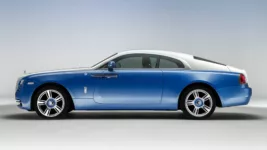The Indian Space and Research Organisation (ISRO) is gearing up to undertake the maiden launch of its very own indigenous version of a ‘space shuttle’, the RLV-TD, a fully made-in-India effort.
Very similar in looks to the American space shuttles, the RLV-TD, which is currently experimental, is a scale model almost 6 times smaller than the final version.
Sunday will see ISRO launch a sleek winged scale model which is almost the weight and size of a sports utility vehicle (SUV) and is currently being given final touches at Sriharikota as it awaits the final countdown.
lf all goes well, possibly before the monsoon sets in, India’s space port at Sriharikota will witness the launch of the final version of the indigenously made Reusable Launch Vehicle – Technology Demonstrator (RLV-TD). This will be the first time ISRO will launch a space craft which actually has delta wings. After launch, it will be glided back onto a virtual runway in the Bay of Bengal.
Scientists at ISRO believe that they could reduce the cost of launching things into space by as much as 10 times if reusable technology succeeds, bringing it down to USD 2,000 per kg.
The making of the Indian space shuttle or RLV-TD has taken 5 years and the government has invested Rs 95 crore in the project. This flight will test the capability of the vehicle to survive a re-entry at speeds higher than that of sound so it is called a hyper sonic experiment. The 6.5-m-long ‘aeroplane’-like spacecraft will weigh 1.75 tons and will be hoisted into the atmosphere on a special rocket booster.
The RLV-TD is unlikely to be recovered from sea during this experiment as it is expected that the vehicle will disintegrate on impact with water since it is not designed to float. The purpose of the experiment is not to see it float but to glide and navigate from a velocity five times higher than the speed of sound onto a designated virtual runway in the Bay of Bengal some 500 km from the coast.
600 scientists and engineers have toiled hard in developing the technology and in making the RLV-TD a reality. They will be anxiously watching with baited breath to see if their baby succeeds.
Shyam Mohan, the project director from VSSC for this landmark experiment, says his team has spent sleepless nights in perfecting this new rocket but adds that space technologies are inherently risky, reminding us of the pitfalls of developing a technology that other super powers have previously failed to do.
(With inputs from PTI.)








